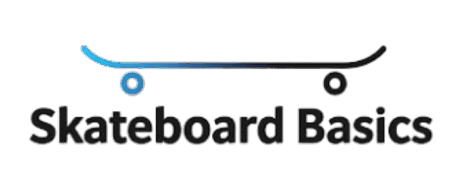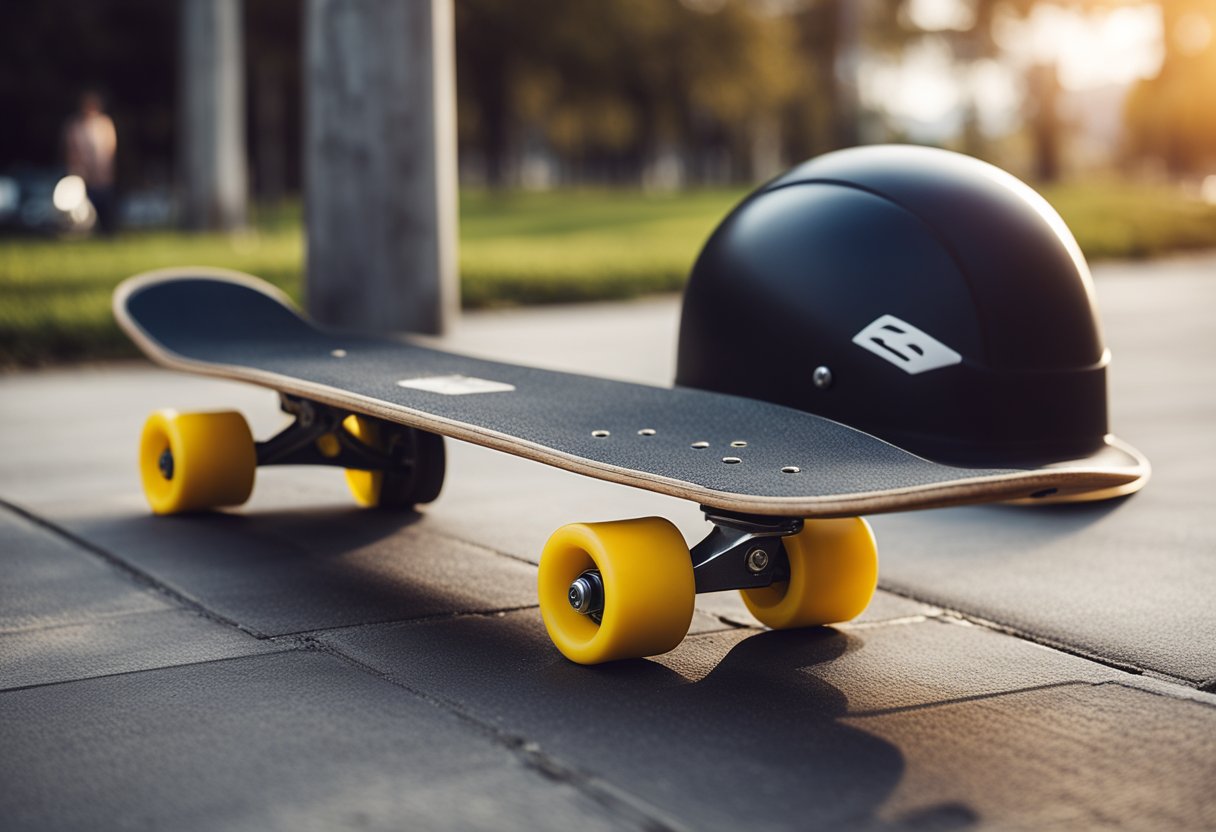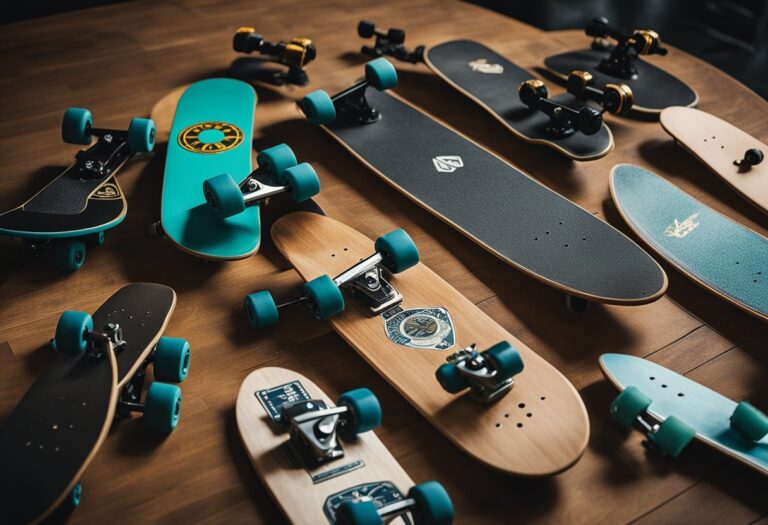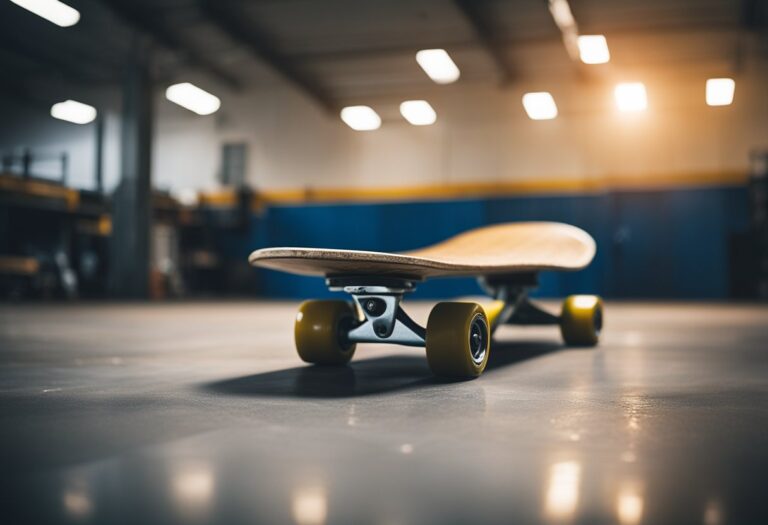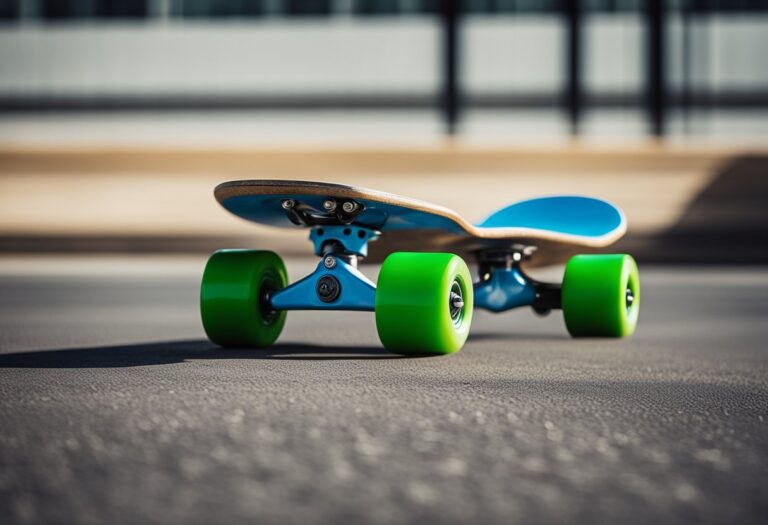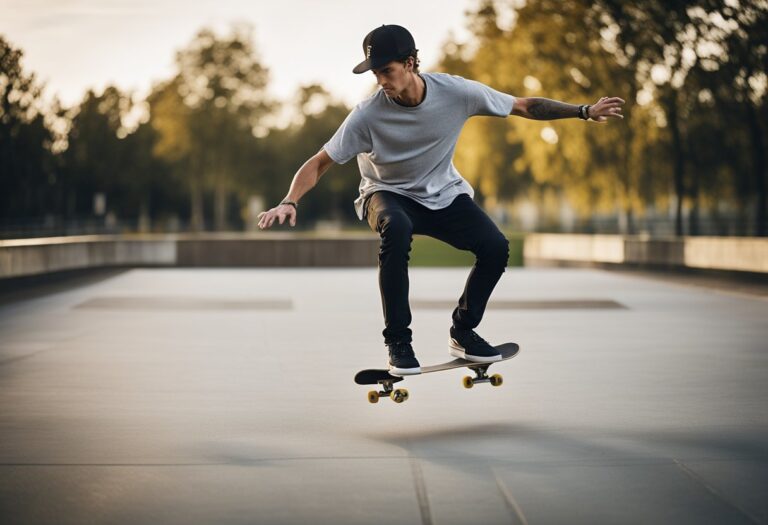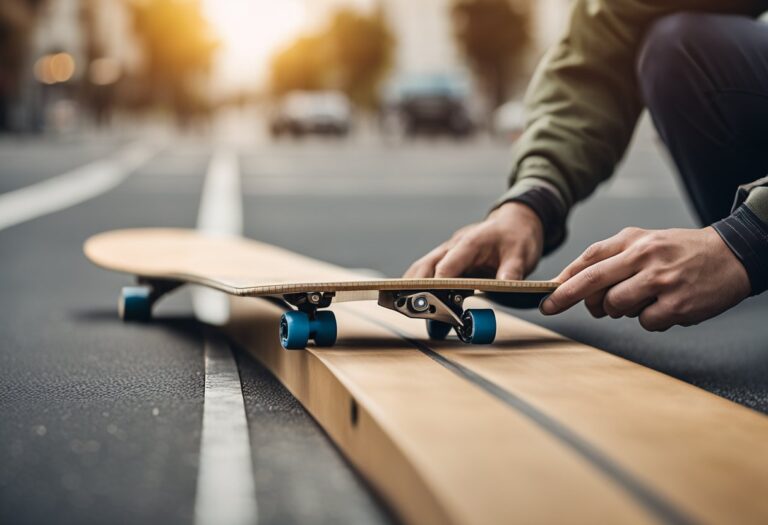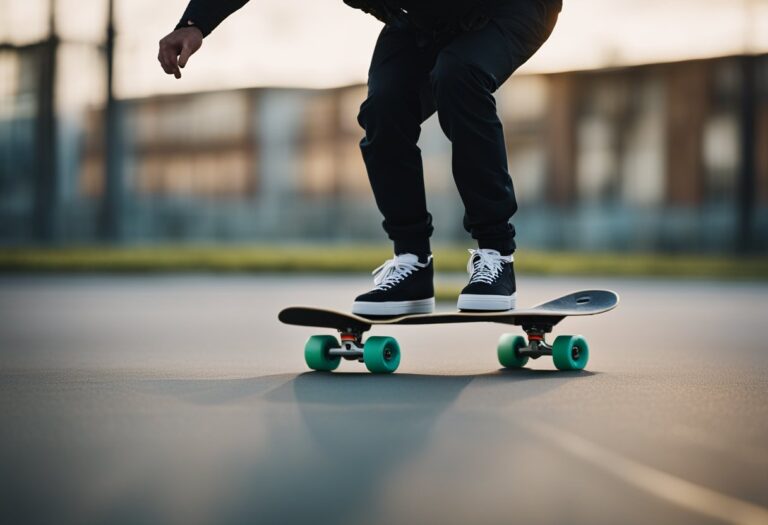Embark on Your Skateboarding Journey: Beginner’s Roadmap for Progress
Skateboarding is a popular sport that has been around for decades. It is a fun way to get exercise and explore the outdoors. However, for beginners, it can be intimidating to know where to start. That’s why this article will provide a beginner’s roadmap for progress, so anyone can embark on their skateboarding journey with confidence.

The roadmap will cover everything from choosing your first skateboard to advancing to intermediate skills. Safety gear and equipment, fundamentals of skateboarding, learning basic tricks, skatepark etiquette, maintaining your skateboard, progress tracking and goal setting, community and culture, and frequently asked questions will all be addressed. By following this roadmap, beginners will be able to develop their skills and become more confident on their skateboard.
Key Takeaways
- Choosing the right skateboard and safety gear is crucial for beginners.
- Fundamentals of skateboarding, such as balance and foot placement, must be mastered before attempting tricks.
- Progress tracking and goal setting can help beginners stay motivated and track their progress.
Choosing Your First Skateboard

Skateboarding is a fun and exciting sport that requires a good skateboard to get started. Choosing the right skateboard can be overwhelming for beginners, but this section will guide you through the process of selecting your first skateboard.
Understanding Skateboard Types
There are three main types of skateboards: street, cruiser, and longboard. Street skateboards are designed for tricks and stunts, while cruisers are perfect for cruising around town. Longboards are ideal for downhill racing and carving. It’s important to choose the right type of skateboard based on your intended use.
Selecting the Right Size
The size of your skateboard is important for your comfort and performance. Skateboard sizes are measured in inches, and range from 7.5 to 8.5 inches in width. A wider skateboard offers more stability, while a narrower skateboard is better for tricks. It’s important to choose a size that feels comfortable for your feet and matches your intended use.
Components and Build Quality
The components and build quality of your skateboard are crucial for your safety and performance. The deck, trucks, wheels, and bearings are the main components of a skateboard. High-quality components will provide better performance and durability. It’s important to choose a skateboard with components that match your intended use and skill level.
In summary, choosing the right skateboard is essential for your success in skateboarding. Understanding the different types of skateboards, selecting the right size, and choosing high-quality components are key factors to consider when selecting your first skateboard.
Safety Gear and Equipment

Essential Protective Gear
When it comes to skateboarding, safety should be the top priority for beginners. Protective gear is essential to prevent injuries. The following are the essential protective gear that beginners should wear:
- Helmet: A helmet is a must-have gear for skateboarding. It protects the head from injuries and reduces the risk of concussion. Always choose a helmet that fits well and is certified by safety standards.
- Knee Pads: Knee pads protect the knees from scrapes and bruises. They also prevent serious injuries to the knee joint in case of a fall.
- Elbow Pads: Elbow pads protect the elbows from scrapes and bruises. They also prevent serious injuries to the elbow joint in case of a fall.
- Wrist Guards: Wrist guards protect the wrists from fractures and sprains. They also reduce the risk of wrist injuries in case of a fall.
Additional Safety Accessories
Apart from the essential protective gear, there are some additional safety accessories that beginners can wear to reduce the risk of injuries. These include:
- Mouthguard: A mouthguard is a protective device that covers the teeth and gums. It protects the mouth from injuries in case of a fall.
- Shin Guards: Shin guards protect the shins from scrapes and bruises. They also prevent serious injuries to the shin bone in case of a fall.
- Impact Shorts: Impact shorts have padding on the hips and tailbone. They protect these areas from injuries in case of a fall.
It is important to wear the right safety gear and equipment while skateboarding. It not only reduces the risk of injuries but also gives beginners the confidence to try new tricks and progress in their journey.
Fundamentals of Skateboarding

Skateboarding is a thrilling and exciting sport that requires a lot of practice and patience to master. Before you start learning any tricks, it is essential to have a solid understanding of the fundamentals of skateboarding. This section will cover the basic concepts that every beginner should know.
Stance and Balance
The first step in skateboarding is to find your stance. Most people are either regular or goofy-footed, meaning they prefer to have their left or right foot forward, respectively. Once you have found your stance, it’s crucial to maintain proper balance on the board. Keep your feet shoulder-width apart and distribute your weight evenly between them. It’s essential to keep your knees bent and your back straight to maintain balance.
Basic Movements
The next step is to learn the basic movements of skateboarding. These include pushing, stopping, and riding. Pushing is the act of using your back foot to propel yourself forward. To stop, you can use your back foot to drag it on the ground or use your front foot to pivot the board and stop it. Riding involves keeping your balance and moving forward on the board.
Turning Techniques
Turning is a crucial aspect of skateboarding and is necessary to navigate through obstacles and perform tricks. There are two primary turning techniques: the kick-turn and the carve. The kick-turn involves using your back foot to lift the front wheels off the ground and pivot the board in the desired direction. The carve involves leaning into the turn and using your body weight to steer the board.
In conclusion, mastering the fundamentals of skateboarding is essential to progress in the sport. With proper stance, balance, and basic movements, you will be well on your way to becoming a skilled skateboarder. Remember to practice regularly, stay safe, and have fun!
Learning Basic Tricks

Learning basic tricks is an important aspect of skateboarding for beginners. It helps to build confidence and improve overall skateboarding skills. Here are some of the basic tricks that beginners can start with:
Ollie
Ollie is one of the most fundamental tricks in skateboarding. It involves jumping with the skateboard while in motion. To perform an Ollie, the rider needs to:
- Place the back foot on the tail of the skateboard and the front foot in the middle of the board.
- Bend the knees and crouch down.
- Jump off the back foot while sliding the front foot towards the nose of the skateboard.
- Level out the skateboard in the air and land back on all four wheels.
Manual
A manual is another basic trick that involves balancing on two wheels of the skateboard. To perform a manual, the rider needs to:
- Start moving with the skateboard.
- Shift the weight towards the back foot and lift the front wheels off the ground.
- Balance on the back wheels for a few seconds and then bring the front wheels back down.
Pop Shove-It
Pop Shove-It is a trick that involves spinning the skateboard while in the air. To perform a Pop Shove-It, the rider needs to:
- Place the back foot on the tail of the skateboard and the front foot near the middle of the board.
- Pop the tail of the skateboard and jump off the back foot.
- Slide the front foot towards the nose of the skateboard while kicking the back foot to spin the skateboard.
- Catch the skateboard with both feet and land back on all four wheels.
Learning these basic tricks can be challenging at first, but with practice and persistence, beginners can master them and move on to more advanced tricks.
